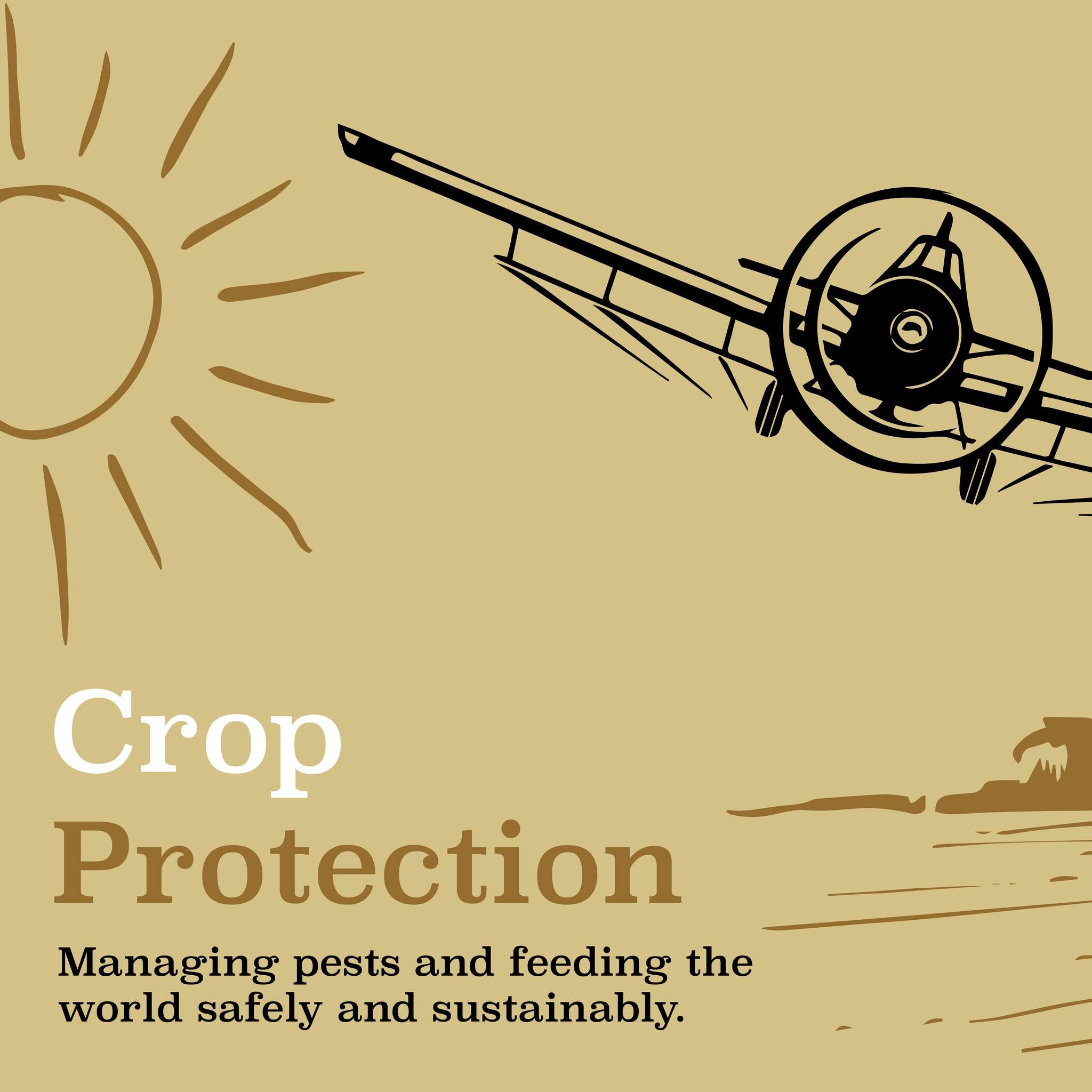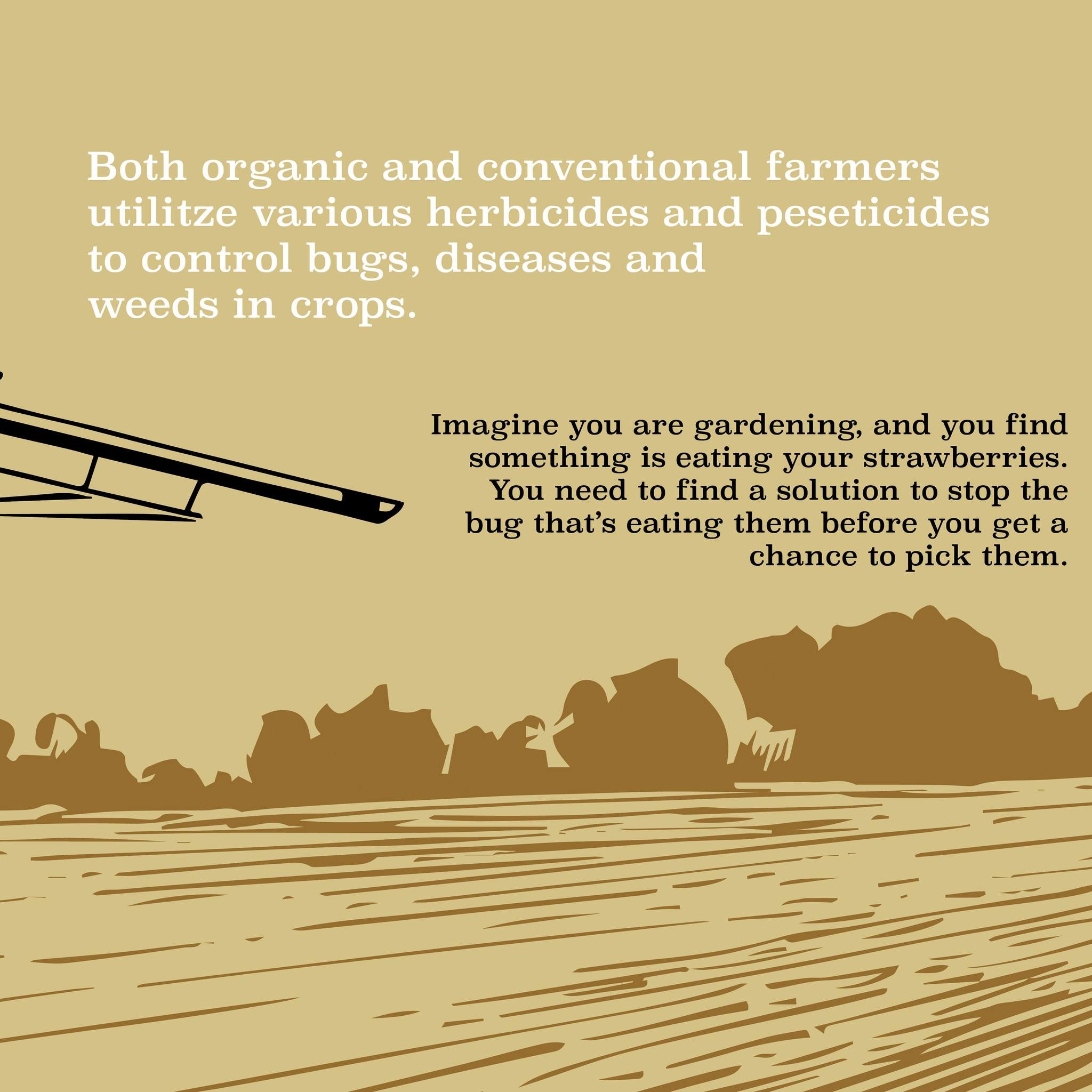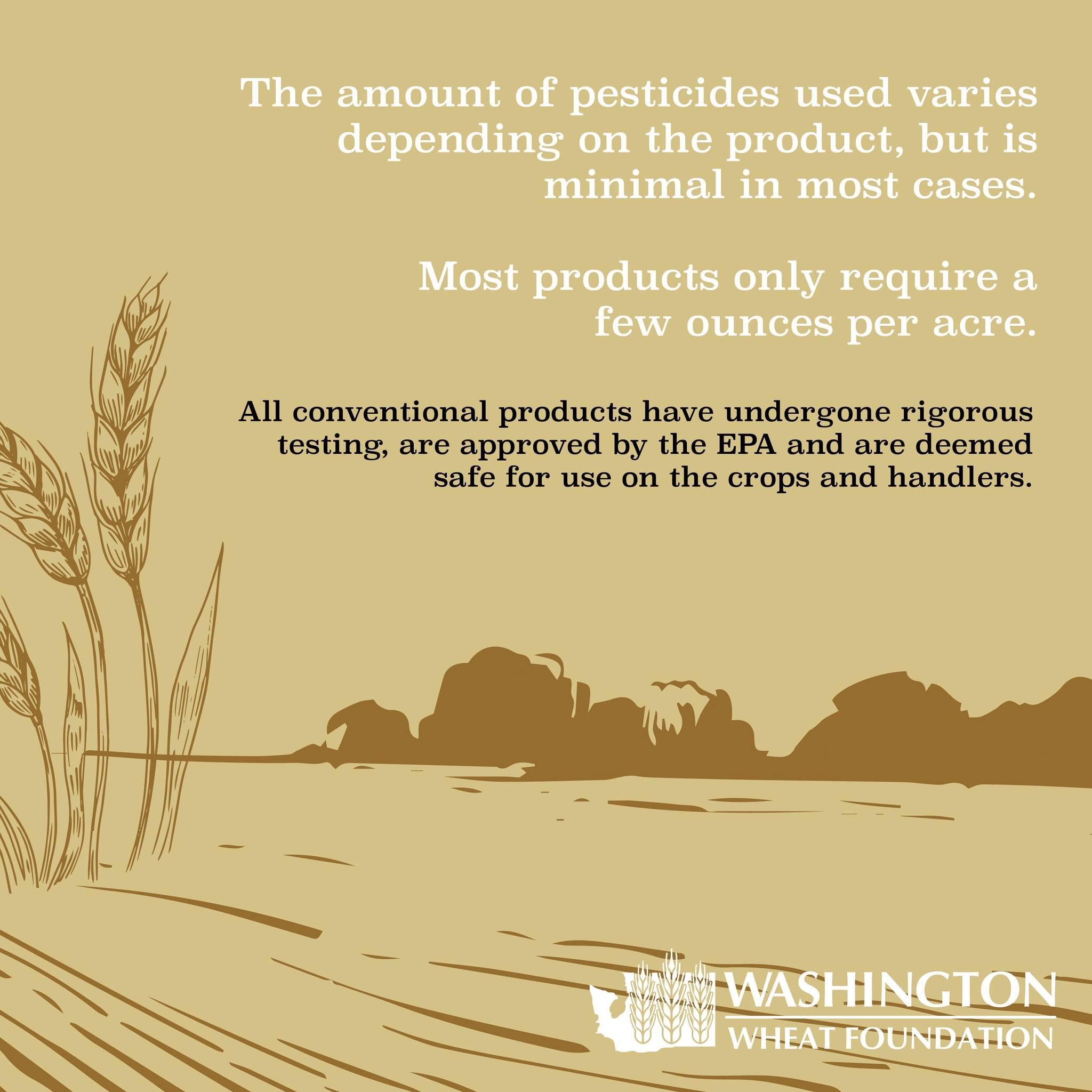WHY WE USE pesticides and other crop protection tools
As a kid growing up on a grain and cattle ranch in eastern Washington, I was surrounded by golden wheat fields, cattle and hay every day. That was my life for the first 18 years, and it’s something I’ll never take for granted. I learned valuable life lessons and the value of hard work. From feeding cows and driving the tractors, to picking rock and pulling weeds, my brothers and I did it all in the fields. Today, I don’t live on the farm, in fact, I live in a city just like most of you reading this. Rather than driving a tractor every day, I write the stories about agriculture and rural America, and my rural roots still run deep.
When you drive across the great state of Washington, once you cross the Olympic mountains and head east, you’ll see field upon field of wheat, corn, potatoes, hay, and various fruit and vegetables. This time of year, the fields are full of tractors. Occasionally, in the air, you’ll see the yellow cropdusters applying various crop protection products to fields. Crop protection – basically a fancy term for pesticides and herbicides. I know there is a lot of misinformation on the internet about crop protection, so this is my humble attempt to explain how things work from the farm perspective.
On the farm each spring, when the wheat is green and starts growing, so do weeds and bugs, just like in my garden this year. My zucchini started the year with a bang, only to be invaded by squash bugs, which decimated the plants until I sprayed them with a pesticide. If I hadn’t used the spray, the bugs would have killed my entire zucchini crop. Gardeners also use other types of pesticides including organic and other conventional methods.
Similarly, wheat farmers spray their wheat crop with pesticides in order to stop the growth of diseases and bug infestations, as well as certain weeds like downy brome (cheat grass), jointed goatgrass, lambs quarter and wild oats. Those pests either damage the crop or use up the moisture in the ground. Weeds also use up the fertilizer that we apply to provide the nutrients wheat plants need to grow. Every drop of moisture is vital on my family’s farm, because we are in a high desert climate and only receive 12 inches of rain per year. If weeds like cheat grass use up that moisture, it can be devastating to our crop.
When it’s time to spray, we meticulously follow the instructions on the label of the product. Every product has slightly different instructions regarding application rates and outside temperature requirements. We also have to wait for a relatively wind-free day to avoid spray drifting into neighbor’s fields. On an average product, the mix rate is usually less than 5% of the active ingredient and more than 95% water. Our sprayer has a 1000 gallon tank on it, which allows us to spray roughly 100 acres per load, making us more efficient and using less fuel.
Our sprayer has wings, or “booms”, with nozzles roughly every 2 feet. These nozzles can be changed out and apply a larger or smaller volume of spray based on our goals with the product. The nozzles then apply a misted spray of the product. You can actually walk safely behind the sprayer and barely get your shoes and pant legs wet right after the spray is applied. Farmers always use the least amount of product necessary to get the job done because of cost. I’ve never met a farmer who overapplies product to their crops…it’s a waste of money.
My family’s farm is what you would call a conventional farm. We work the ground and use manufactured herbicides and pesticides to provide crop protection. We choose to do this because we’ve found it is the most efficient way for us to grow the most productive crops possible on our land. Several of our neighbors have adopted minimum-till, or no-till, farming practices, which fit their farm and land. The beauty of farming is there are multiple ways to achieve the goal of providing safe, healthy and sustainable food for the world.
The herbicides and pesticides that our farms use today go through strict analysis and approval processes at the Environmental Protection Agency (EPA), and they have been deemed safe to the public. Gone are the days of using products like agent orange and DDTs to manage pests. In fact, in the early 1970s the EPA banned the use of DDTs on agriculture products. Today, our pesticides, herbicides and fertilizers use less harmful ingredients and are more efficient and safer than ever before.
Conventional farmers, minimum and no-till farmers, and even organic farmers, use versions of pesticides and herbicides to provide crop protection. Without it, crop production would drastically decrease and, in some cases, produce nothing fit for human consumption.
Beyond spraying, sometimes it just takes some good old-fashioned manual labor to battle weeds and other pests. My brothers, cousins and I spent many days throughout the year roughing goat grass and other invasive weeds out of our crops. Sometimes you miss a patch of weeds or they show up after having sprayed, so you grab a pair of gloves and a garbage sack and pull weeds. At the end of the day, it’s our job to provide clean, safe and healthy wheat that can be ground up and used in pastries, cakes, biscuits, crackers, pasta and so many other great staples we find in our pantries.
At the end of the day, farmers feed us all, and yes, they do it to make a living, just like all of us who work out of an office. I can tell you, however, having grown up on a farm, it is really rewarding to be a part of something bigger than yourself and to step back and realize that what you do each day, truly impacts the world. Raising crops feeds the world and leaves a lasting impact. So on your next drive across the state, rest assured, the farmers of Washington are working hard to provide the greatest and safest food supply for each and every one of us.
YOU CAN SEE THE DIFFERENCE
The photo above shows the consequences farmers face if they fail to use seed treatment when pests are prevalent; in this case wireworms.
Insects, weeds and plant diseases are serious threats to Washington farmers that can devastate crops. Throughout history, farmers have found ways to manage these threats to prevent the loss of their livelihood – and a lot of food.
Each year farmers face tough management decisions, especially when it comes to the best route to raise a good crop while managing environmental impact and costs. They face this reality from the time the seed goes into the soil through harvest, whether they follow organic or conventional farming practices, every farmer employs some type of pest management.
Farmers closely monitor pests, weeds and plant diseases by walking fields, digging into the soil and looking at the plant’s overall health. Pesticides, fungicides, herbicides and seed treatments are all tools to help manage these challenges and provide healthy choices. Precise management of these tools – based on science, education and a commitment to the environment – is essential to a healthy farm.
Proper use of these tools should not be underestimated. For example, if U.S. farmers did not use pesticides, supplies of corn, wheat, and soybeans would decrease 73 percent, trigger price instability, slow U.S. food aid programs to poor countries, and increase worldwide hunger( Learn more HERE). During the 2012 drought, without proper pesticide use, the insect population would swell, like during the Dust Bowl, and destroy even more crops.
The plot in the photo above illustrates how seed treatment can help protect crops against pests like wireworms.
A key component to raising good crops is available nutrients in the soil, such as nitrogen, phosphorus, lime (calcium) and potassium, and farmers closely monitor soil health. Through extensive research, farmers have a higher understanding of how to best replenish soil nutrients, even micronutrients like zinc and manganese. Additionally, there has been extensive university research regarding timing of fertilizer applications for optimum plant uptake and reduced leaching (learn more HERE).
Farmers use fertilizers to grow high-yielding crops and to take care of the soil, rather than stripping the land of its natural resources. Often man-made fertilizers or manure applications are used to increase nitrogen fertility in the soil, which is a key component for growing field crops. To avoid over-applying and efficiently using their resources, nutrient levels are tested in the soil.
Farmers use all components – herbicides, pesticides, fungicides and fertilizers – with respect to the environment. They carefully follow labels and consider weather patterns that may impact the efficacy or leaching of an application.
Due to genetic advancements developed within the plant – like biotech traits – many of these tools are used more efficiently. In many cases, crop protection and fertility applications are used so precisely that application amounts are often reduced. Because of Bt developments in corn, a study assessing the global economic and environmental impacts of biotech crops for the first nine years (1996-2004) of adoption showed that the technology has reduced pesticide spraying by 172 million kg and has reduced environmental footprints associated with pesticide use by 14% ( learn more HERE).
Additionally, because of conventional breeding and overall plant health, many crops can withstand plant diseases better than crops in the past. Other innovations, like Global Positioning Systems (GPS) in tractors and spray machines, have greatly increased precision by applying only where needed rather than widespread field applications. Most farmers involved have learned ways to reduce nitrogen use by 50 lbs. per acre or more by using this technology (learn more HERE).
Sources: U.S. Farmers & Ranchers Alliance







